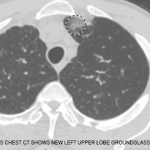We are, of course, constrained by our data, or lack thereof. Our discussions of genetics are still often limited to discussions of HLA subtypes, and a big data approach implies that we have big data, which is only true for the most common rheumatic diseases. Moreover, big data approaches depend crucially on the quality of the data we collect. We cannot analyze tests that we did not think to order. Similarly, applying modern technologies, such as natural language processing, to our hastily written electronic documentation may not be as fruitful as we had once hoped.
Probably the biggest constraint, ironically, is us. If you are like me, you were dragged kicking and screaming into the latest era of classification criteria. The new criteria resist all attempts at mnemonics, because they require that you remember both the criteria and the associated point system that determines whether a patient merits a given diagnosis.
In the next era, it seems likely that patients will be classified on the basis of some combination of clinical features and molecular markers, and we will simply have to get used to the idea that two patients who clinically have the same disease may require very different therapies. The next era of therapeutics will require us to find different ways to lump our patients. As Professor Herschbach might have said, it’s all a matter of perspective. We just have to move a little closer.
 Philip Seo, MD, MHS, is an associate professor of medicine at the Johns Hopkins University School of Medicine, Baltimore. He is director of both the Johns Hopkins Vasculitis Center and the Johns Hopkins Rheumatology Fellowship Program.
Philip Seo, MD, MHS, is an associate professor of medicine at the Johns Hopkins University School of Medicine, Baltimore. He is director of both the Johns Hopkins Vasculitis Center and the Johns Hopkins Rheumatology Fellowship Program.
References
- Ropes MW, Bennett GA, Cobb S, et al. Propsoed diagnostic criteria for rheumatoid arthritis. Bull Rheum Dis. 1956 Dec;7:121–124.
- Arnett FC, Edworthy SM, Bloch DA, et al. The American Rheumatism Association 1987 revised criteria for the classification of rheumatoid arthritis. Arthritis Rheum. 1988 Mar;31(3):315–324.
- Aletaha D, Neogi T, Silman AJ, et al. 2010 Rheumatoid arthritis classification criteria: American College of Rheumatology/European League Against Rheumatism collaborative initiative. Arthritis Rheum. 2010 Sep;62(9):2569–2581.
- Jacobellis v. Ohio. 378 U.S. 184 (1964).
- 1000minds.
- Lötvall J, Akdis CA, Bacharier LB, et al. Asthma endotypes: A new approach to classification of disease entities within the asthma syndrome. J Allergy Clin Immunol. 2011 Feb;127(2):355–360.
- Ligon C, Schulam P, Saria S, et al. Faces in motion: Clinical subtyping in scleroderma using changes in forced vital capacity [abstract 2019]. Arthritis Rheumatol. 2016;68(suppl 10).
Errata
In the article, “Family Practice,” in the March issue of The Rheumatologist, Jonathan Kay, MD, was incorrectly identified as the chief of rheumatology at the University of Massachusetts. However, the chief of rheumatology is Ellen Gravallese, MD, who holds the Myles J. McDonough Chair in Rheumatology at UMass and and is professor of medicine at the University of Massachusetts Medical School.


